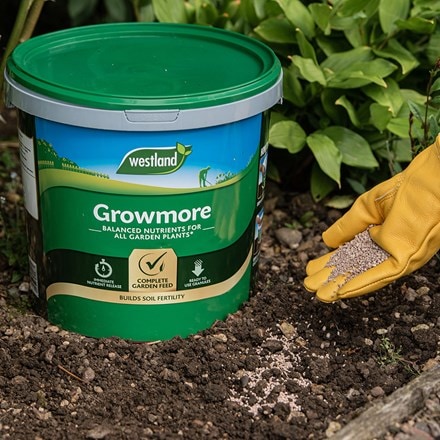Eventual height & spread
Helleborus × hybridus Harvington Single Yellow Gold Nectaries
Lenten rose hellebore
- 2 litre pot
- £27.99
- available to order from autumn
- 3 × 2 litre pots
- £69.99 £23.33 each
- available to order from autumn
Delivery options
- Standard £5.99
- Position: partial shade
- Soil: heavy, neutral to alkaline soil
- Rate of growth: average
- Flowering period: February to April
- Hardiness: fully hardy
This semi-evergreen, clump-forming perennial offers striking cup-shaped yellow flowers with a golden crown of nectaries, appearing in late winter to early spring. Its divided, leathery mid-green foliage provides excellent ground cover, thriving in dappled shade beneath deciduous trees or shrubs.
Ideal for borders or patio pots, Helleborus × hybridus 'Harvington Single Yellow Gold Nectaries' pairs beautifully with early spring companions like daffodils, snowdrops, and anemones, adding vibrant colour at the start of the season. Perfect for creating interest in shaded garden areas, the crown of foliage immediately behind the flower bud also shares a lemon colouration.
Please note that a soft pink/purple flare to the base of the petals is a trait of some of the Yellow Gold Nectaries and is often visible once the nectaries have fallen away.
Ideal for borders or patio pots, Helleborus × hybridus 'Harvington Single Yellow Gold Nectaries' pairs beautifully with early spring companions like daffodils, snowdrops, and anemones, adding vibrant colour at the start of the season. Perfect for creating interest in shaded garden areas, the crown of foliage immediately behind the flower bud also shares a lemon colouration.
Please note that a soft pink/purple flare to the base of the petals is a trait of some of the Yellow Gold Nectaries and is often visible once the nectaries have fallen away.
Add lots of well-rotted leaf mould or organic matter to the planting hole. Cut the old leaves back down to the ground in January or February as this will show off the new emerging flowers to best effect. It will also help to get rid of foliar diseases such as Hellebore leaf spot.
Apply a generous 5-7cm (2-3in) mulch of well-rotted organic matter around the base of the plant in autumn and provide a top-dressing of general fertiliser each spring. Cut off the seed heads to prevent inferior seedlings colonising.
Apply a generous 5-7cm (2-3in) mulch of well-rotted organic matter around the base of the plant in autumn and provide a top-dressing of general fertiliser each spring. Cut off the seed heads to prevent inferior seedlings colonising.
- Humans/Pets: Harmful if eaten; skin irritant


